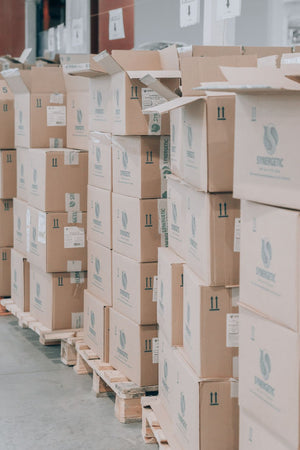How to Get Rid of Mold
Getting Rid of Mold: From Quick Fixes to Long-Term Solutions
Mold can cause us much discomfort in the form of itchy eyes, sneezing, coughing, and irritation of the respiratory system. However, the dangers of mold are much more serious for those suffering from asthma or allergies, since they can induce severe allergic reactions and asthma attacks. What’s more is that most people who have mold  in their homes don’t even know it, since mold often grows within ductwork, behind furniture, within walls, above ceiling tiles, around pipes, and in basements, attics, and crawl spaces.
in their homes don’t even know it, since mold often grows within ductwork, behind furniture, within walls, above ceiling tiles, around pipes, and in basements, attics, and crawl spaces.
Mold spores grow with the aid of household dust, which contains tiny fragments of organic materials. In addition to dust, a mold spore just needs moisture to grow and multiply. Things like living near water, pressure washing, leaky roofing or insulation, leaky or condensing pipes, and condensation from A/C units can all humidify the air and provide ample moisture for mold to grow.
If you have visible mold, you can use a variety of household chemicals to kill it. Bleach can work well on non-porous surfaces, such as glass, granite, and tile. Mix a cup of bleach into a gallon of water and spray or sponge the mixture onto the surface – be sure to wear gloves and a gas mask and that the area is well ventilated. Ammonia can be used in a similar way, but it is also a substance with which you must be very cautious.
Vinegar is a much safer way to get rid of mold, but it is not as potent. You can put vinegar into a spray bottle without diluting it and cover the affected area – wipe through with a wet cloth an hour later and let the area dry. 3% Hydrogen Peroxide can be used in a similar way, but this chemical can bleach surfaces, so be careful with where you put it. Leave Hydrogen Peroxide on the surface for around ten minutes before scrubbing and wiping.
You can also dissolve some baking soda in water and spray the moldy area in a similar manner. This method can also help deodorize the moldy area.
However, dead mold is still a respiratory irritant, so simply killing mold is not the same as eliminating it. If you are sensitive to inert mold spores – as many children, asthma sufferers, and allergy sufferers are – an air purifier can help filter out airborne mold spores, both dead and alive. HEPA air purifiers use a filter that can trap 99.97% of particles larger than 0.3 microns; mold particles are typically between 3 and 30 microns. See our best air purifier for dust and mold section for some examples. If you are only concerned with live mold, an Airfree air sterilizer may be the best air purifier for you.
Alternatively, dehumidifiers are a preventive measure against mold since they control the humidity levels and can operate continuously. A dehumidifier is a must for households with basements, crawl spaces, or areas that experience frequent rainfall.
Mold can grow at any time with moisture derived from household plumbing and running water systems, but it is especially bad during the rainy part of the year. Many people don’t even know that they have a mold problem until they experience mysterious symptoms  and have an expert check behind walls and within the workings of the home’s HVAC system (Heating, Ventilation, & Air Conditioning). The tricky issue with mold is that it often grows within the inner workings of the home, wherein lay the plumbing, appliance piping, and air conditioning infrastructure – things that, by definition, we do not see.
and have an expert check behind walls and within the workings of the home’s HVAC system (Heating, Ventilation, & Air Conditioning). The tricky issue with mold is that it often grows within the inner workings of the home, wherein lay the plumbing, appliance piping, and air conditioning infrastructure – things that, by definition, we do not see.
Mold growth can be a sign of another serious issue since it indicates high humidity. Above normal moisture levels pose a threat to furniture, wooden components of the infrastructure, and the foundation of the house. It is also a hazard to electrical appliances and wiring. To browse dehumidifiers by need, see our dehumidifiers section for categories that include basement, crawl space, household, and pool & marine.
The EPA recognizes mold growth as a serious issue that must be dealt with quickly and responsibly. It can cause serious damage to your property and pose a health risk to you and your family. Feel free to contact us if you have any questions about dehumidifiers or air purifiers for mold removal or any related issues.
References:
https://www.epa.gov/iedmold1/moldbasics.html
https://blackmold.awardspace.com/kill-remove-mold.html
Resources

Family Owned
Authorized Dealers
Thousands of 5 Star Reviews

World Class Customer Service

Fast & Free Shipping Options

Family Owned
Authorized Dealers
Thousands of 5 Star Reviews

World Class Customer Service

Fast & Free Shipping Options

Family Owned
Authorized Dealers
Thousands of 5 Star Reviews

World Class Customer Service

Fast & Free Shipping Options













